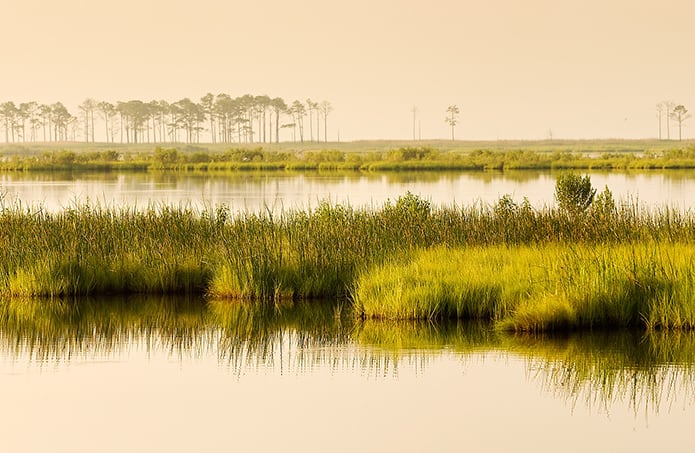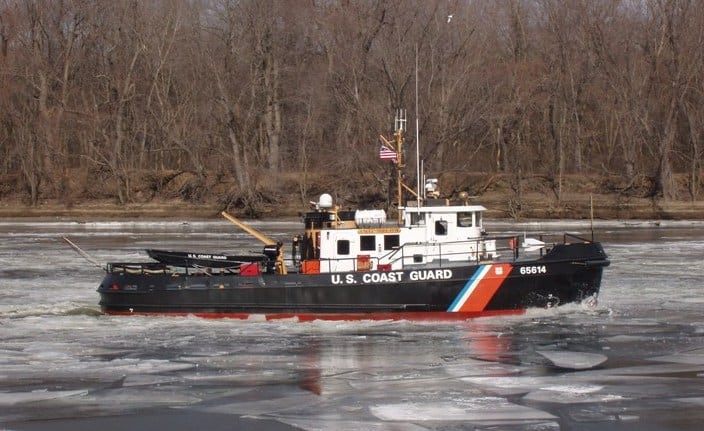By Jeremy Cox, Bay Journal News Service
A year of historically heavy rainfall strained the Chesapeake Bay’s ecosystem — but not past the breaking point, according to a wide-ranging assessment released Tuesday.
Photo: Dave HarpThe estuary’s overall health score in 2018 dropped from 54 percent to 46 percent but retained its “C” grade for a seventh consecutive year, according to the University of Maryland Center for Environmental Science’s latest report card.
It marked the lowest grade since 2013 and reversed a streak of four years of improving or steady scores.
“We don’t have as good of news to report because of some record rainfall,” said Bill Dennison, UMCES vice president for science application. “The good news is it took a hit, but it did not crash.”
The federal government and the states within the 64,000-square-mile Bay watershed are working on a plan to reduce nutrient and sediment pollution under an agreement signed in 2010. The effort faces a 2025 deadline.
The resilience of that recovery faced one of its biggest tests last year. About 72 inches of rain inundated the Baltimore area during 2018, about 30 inches more than normal, according to the report.
From a scientific perspective, the deluge offered a glimpse of how the recovering ecosystem may respond as climate change leads to increasingly erratic weather, Dennison said.
Many scientists predicted that last year’s rains would dampen the restoration gains. The UMCES report bears out those projections, showing reductions in the scores for water clarity, nitrogen, phosphorus and aquatic grasses.
But Dennison pointed to how the Bay ecosystem reacted in 2018 compared with another unusually wet year. In 2003, Hurricane Isabel caused the score to plummet 19 percentage points. Last year, the decline halted at 8 points.
“That’s what I’m encouraged by,” Dennison said.
The long-term trajectory continues to point toward a recovery in ecological health, UMCES President Peter Goodwin said.
“The Bay is in fact showing resilience in the face of climate change and extreme weather events, underlining that the restoration efforts must remain vigilant to continue these hard-won efforts,” he said.
Almost all regions saw water quality declines in 2018, though. The greatest deterioration took place in the Elizabeth River, the southeastern Virginia tributary where the overall health score fell from 46% to 21%. For the first time since 2014, the Patapsco and Back rivers in the Baltimore area received an “F” grade, falling to 19%.
The UMCES evaluation follows closely in the footsteps of two other Bay report cards released earlier this year. In April, the state-federal Chesapeake Bay Program said 42% of the Bay and its tidal tributaries met water quality standards during 2015–17, a 2-percentage point gain from the previous period.
That didn’t include the effects from 2018’s storms. A January checkup by the Chesapeake Bay Foundation did, though, and lowered the Bay’s grade from a C-minus to a D-plus.
UMCES has been compiling its report card annually since 2007. But last year’s cloud-shrouded skies and rough boating weather complicated researchers’ efforts to survey the Bay’s health, Dennison said.
He admitted that the underwater grass metric in the report is based on incomplete data. The report shows a dip from 44% to 36%. Researchers turned to satellite imagery to supplement the surveys normally gathered from airplane flights. But a final tally remains two or three weeks away, he said.
Blue crab and Bay anchovy scores sank significantly in the latest report.
Despite a Baywide fish survey that found a significant decrease in the striped bass population during 2018, the score for striped bass remained at 100% because it is based on three years of observations. But concerns have risen about the health of the overall East Coast stock, triggering the need for management actions by the Atlantic States Marine Fisheries Commission, which regulates catches along the coast.
Amid signs of trouble for the fishery, the Virginia Marine Resources Commission voted in April to close the state’s spring striped bass trophy season. East Coast fishery managers have since begun taking steps to reduce its harvest by 17% next year.
For its part, the Maryland Department of Natural Resources has focused on trying to reduce “dead discards,” requiring anglers to use less-invasive hooks and allowing them to keep smaller specimens. DNR Secretary Jeannie Haddaway-Riccio reaffirmed Tuesday that her agency will continue with that strategy.




